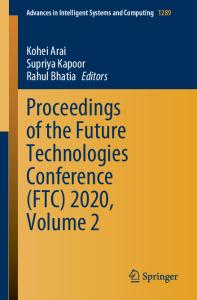Fabrication and performance test of biodegradable supercapacitor
- PDF / 497,285 Bytes
- 8 Pages / 432 x 648 pts Page_size
- 96 Downloads / 338 Views
MRS Advances © 2019 Materials Research Society DOI: 10.1557/adv.2019.253
Fabrication and performance test of biodegradable supercapacitor Hu Li,1,2 Yubo Fan1 and Zhou Li 2,3* 1 Beijing Advanced Innovation Centre for Biomedical Engineering, Key Laboratory for Biomechanics and Mechanobiology of Chinese Education Ministry, School of Biological Science and Medical Engineering, Beihang University, Beijing 100083, China. E-mail: [email protected]
2 CAS Center for Excellence in Nanoscience Beijing Key Laboratory of Micro-Nano Energy and Sensor, Beijing Institute of Nanoenergy and Nanosystems, Chinese Academy of Sciences, Beijing 100083, China.
3
School of Nanoscience and Technology, University of Chinese Academy of Sciences, Beijing 100049, China. E-mail: [email protected]
ABSTRACT
Power source plays an important role in keeping normal functions of biodegradable electronic devices. In this paper, we proposed a fabrication method of biodegradable supercapacitor (BSC), which can provide energy for portable and implantable medical electronics. The BSC has a sandwich-like symmetric structure, which was assembled layer by layer. The electrochemical performances of BSC were measured, including the cyclic voltammetry test, galvanostatic charge-discharge and electrochemical impedance spectroscopy. Titanium foil was used as a template to generate microstructure for polylactic acid (PLA) supporting substrate. The microstructure provided strong adhesion force for iron film in sputtering process. The nanoporous zinc oxide layer was prepared by evaporationdriven self-assembly technology on iron film. The nanoporous structure was in favour of ionic storage in charging-discharging process. About 60% of capacitance retention was achieved after 3000 times of cycling test. After connecting three BSC in series, a green LED pattern was lighted up immediately, indicating that the energy was stored in BSC device successfully. After immersing the BSC in DMEM, the BSC can be totally degraded gradually. This work provided a feasible scheme for developing biodegradable energy storage device, it also gave a possible avenue for powering biodegradable electronic devices.
2063
Downloaded from https://www.cambridge.org/core. Columbia University - Law Library, on 05 Dec 2019 at 21:52:11, subject to the Cambridge Core terms of use, available at https://www.cambridge.org/core/terms. https://doi.org/10.1557/adv.2019.253
INTRODUCTION With the fast development of electronic products, various innovative energy harvesting and storage technologies emerged to meet their power requirements.[1-3] As new electronic devices, biodegradable electronic devices (BEDs) can be partly or fully degraded in biofluid and environmental water, which is totally different from the durable operation of traditional electronic devices.[4-8] The BEDs can be used in implantable medical diagnose and therapy, avoiding the second operation and side-reaction of longterm implantation.[6-8] For military sensor application, the BEDs achieved instant degradation after being discarde
Data Loading...











